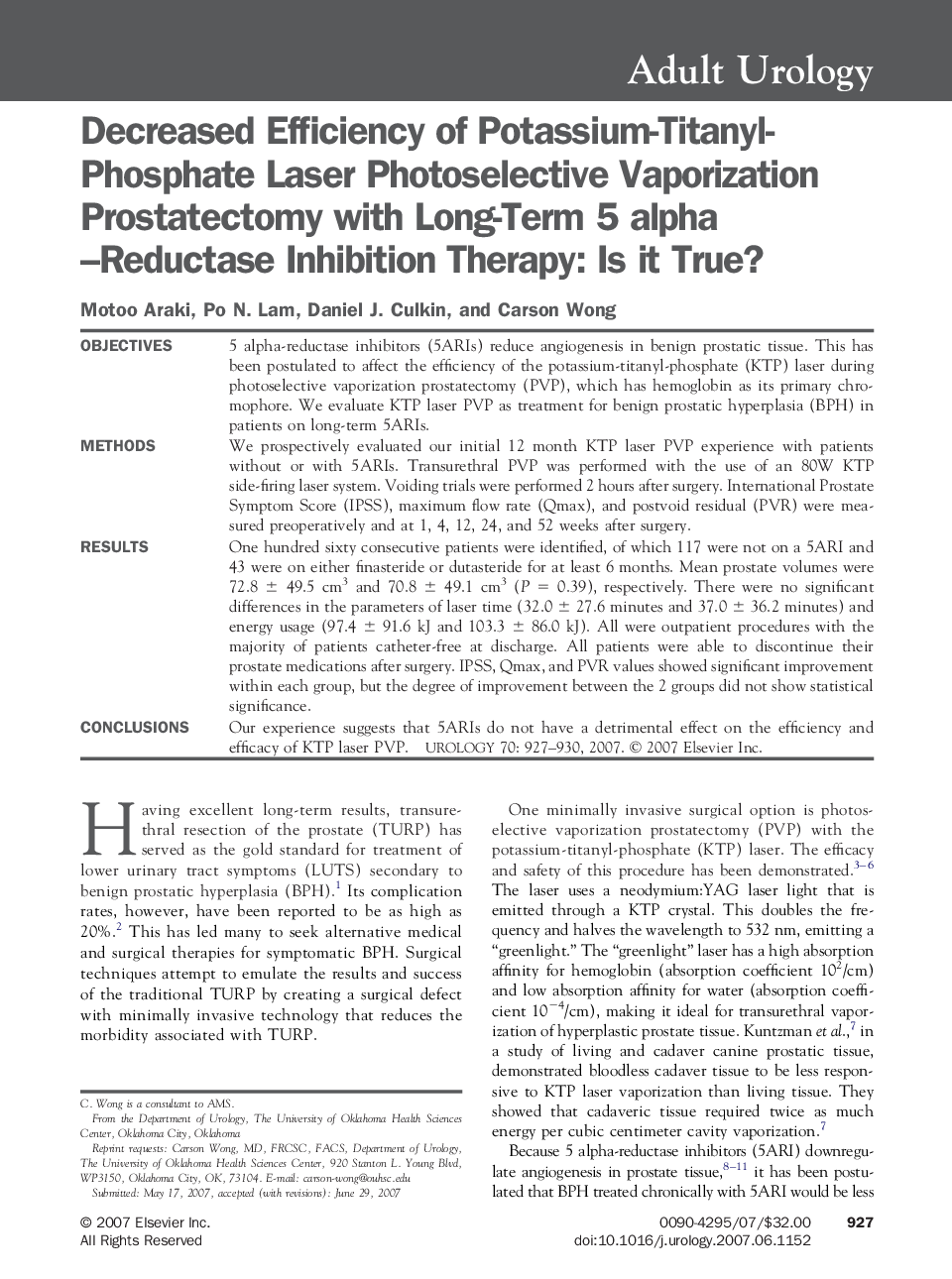| کد مقاله | کد نشریه | سال انتشار | مقاله انگلیسی | نسخه تمام متن |
|---|---|---|---|---|
| 3904691 | 1250396 | 2007 | 4 صفحه PDF | دانلود رایگان |

Objectives5 alpha-reductase inhibitors (5ARIs) reduce angiogenesis in benign prostatic tissue. This has been postulated to affect the efficiency of the potassium-titanyl-phosphate (KTP) laser during photoselective vaporization prostatectomy (PVP), which has hemoglobin as its primary chromophore. We evaluate KTP laser PVP as treatment for benign prostatic hyperplasia (BPH) in patients on long-term 5ARIs.MethodsWe prospectively evaluated our initial 12 month KTP laser PVP experience with patients without or with 5ARIs. Transurethral PVP was performed with the use of an 80W KTP side-firing laser system. Voiding trials were performed 2 hours after surgery. International Prostate Symptom Score (IPSS), maximum flow rate (Qmax), and postvoid residual (PVR) were measured preoperatively and at 1, 4, 12, 24, and 52 weeks after surgery.ResultsOne hundred sixty consecutive patients were identified, of which 117 were not on a 5ARI and 43 were on either finasteride or dutasteride for at least 6 months. Mean prostate volumes were 72.8 ± 49.5 cm3 and 70.8 ± 49.1 cm3 (P = 0.39), respectively. There were no significant differences in the parameters of laser time (32.0 ± 27.6 minutes and 37.0 ± 36.2 minutes) and energy usage (97.4 ± 91.6 kJ and 103.3 ± 86.0 kJ). All were outpatient procedures with the majority of patients catheter-free at discharge. All patients were able to discontinue their prostate medications after surgery. IPSS, Qmax, and PVR values showed significant improvement within each group, but the degree of improvement between the 2 groups did not show statistical significance.ConclusionsOur experience suggests that 5ARIs do not have a detrimental effect on the efficiency and efficacy of KTP laser PVP.
Journal: Urology - Volume 70, Issue 5, November 2007, Pages 927–930